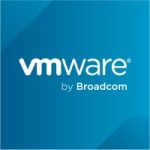What is our primary use case?
Our primary use case for this solution is to use it as our data center backbone. We've got multiple tenants built on it in a network-centric design. We have our Dev\QA Tenant, User Acceptance Tenant, Production Tenant, DMZ, and then UserEdge, where everything basically comes in and goes out. We have Firepower firewalls in-between, but we're basically using Cisco ACI to microsegment between the networks within the tenants. But intra-tenant traffic goes through the firewalls.
How has it helped my organization?
Before we started using Cisco ACI, everything was essentially flat open access. By using ACI, we're able to segment out everything and get more visibility into our virtual environment. We are basically 99.99% virtual at our data center. There are many features we haven't even started using, but we will get there.
What is most valuable?
The features we find most valuable is the integration with the virtual switches of our UCS platform. It gives a lot of visibility right from the ACI console, the ability to channel out the traffic and segment it without having to get into separate physical hardware or trying to figure out VDCs manually. So far that's been really powerful and extremely useful for us.
What needs improvement?
I think there are a lot of additional features that we haven't had a chance to look at yet, but I would like to see a simpler interface where it is easy to find endpoints and get information about them. Making it more user-friendly would be wonderful. That is my main concern.
What do I think about the stability of the solution?
The stability has been good so far. We've got a big project to start doing upgrades on it. But it's been very stable and functioning properly. We haven't really had any issues with it as long as I've been here at the company. I'm sure there were some issues during deployment cause that was before my time. But it's been very stable for me.
What do I think about the scalability of the solution?
In terms of scalability, we haven't grown the deployment yet and we are nowhere near capacity. But it seems like it is relatively scalable in terms of what we could use. It's a matter of what do we need. I just haven't had the opportunity to increase the scale of what we have right now.
How was the initial setup?
The initial setup was fairly complex and it looks terrifying when you first log in. That's one thing about ACI. It takes a bit to wrap your mind around how it works. It's not overly complicated once you understand the concepts, but someone who has never worked with anything like ACI, will initially find it difficult to grasp the complexity of it.
What about the implementation team?
We've used a couple of consultants over the last few years. I believe it was BT that helped us with the initial setup, and we're working with Presidio on the upgrade project. As far as I know, the technical support from BT was great. And the people at Presidio know their stuff, they seem to have good plans for where they're going with it. They put together a concrete plan rather than just saying, "Oh, let's just go for it."
What was our ROI?
I believe there is an ROI. We've been able to streamline our processes dramatically because of the way the new architecture works. So while it was a large investment, I believe that it had a big impact on the general productivity of our systems.
What other advice do I have?
Not many people up in the northeast are familiar with Cisco ACI. It's kind of new and scary, so a lot of people are a little wary of it. Now that I've worked on it for a while, I find it very powerful. Getting direct access into the virtual switches is a huge advantage. I'm not the kind of person who rates nines and tens under many circumstances. So I rate this solution an eight out of ten.
My advice to others would be to take a good long look at it. It's great for segmenting your network and doing a little micro-segmentation in your data center. If you're familiar with the Nexus OS and the Nexus hardware platform, you will find that this is the same hardware platform as you would use in a Nexus OS deployment. Also, make sure you get a lot of training as part of your deployment. That would probably be my biggest piece of advice. Make sure that you get educated on how it works and why it was designed the way it was, or what the best practice design is if you're designing it on your own.
Disclosure: My company does not have a business relationship with this vendor other than being a customer.















